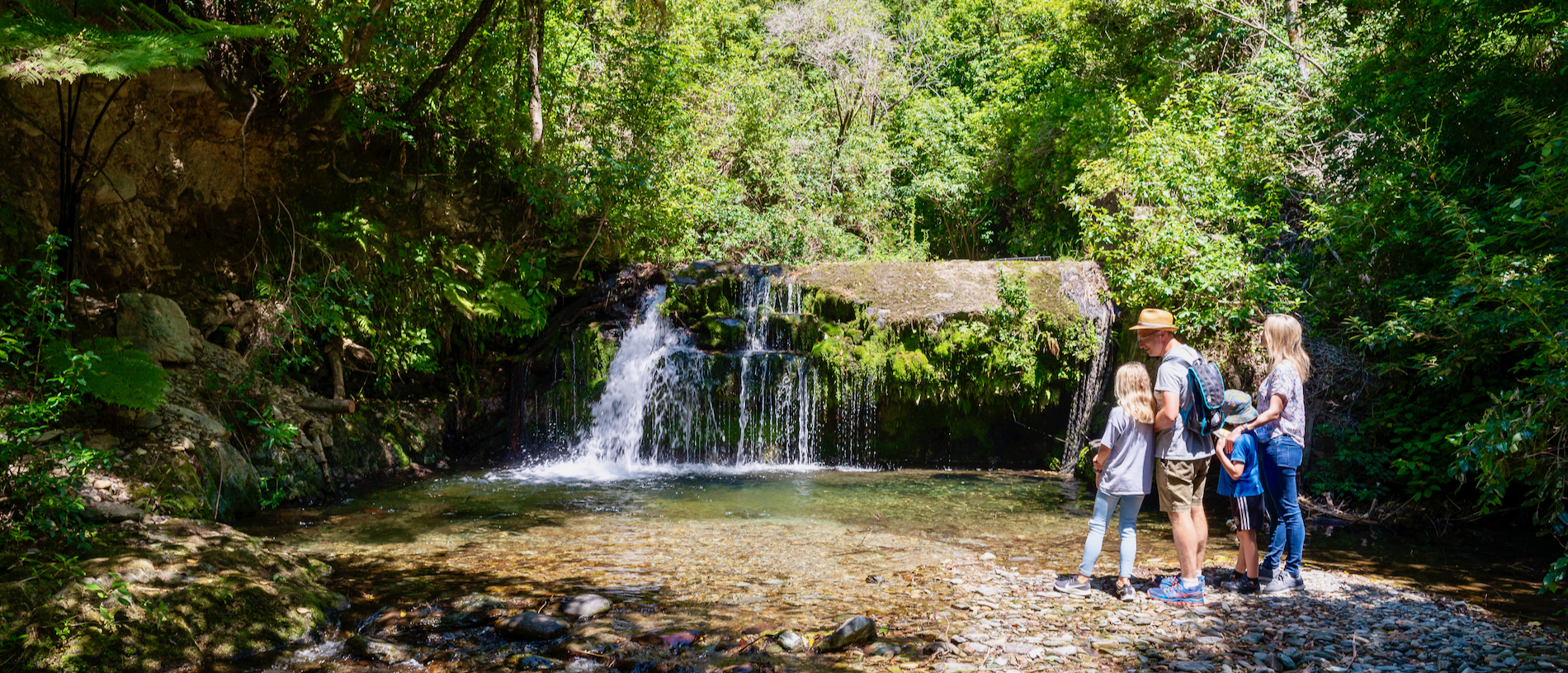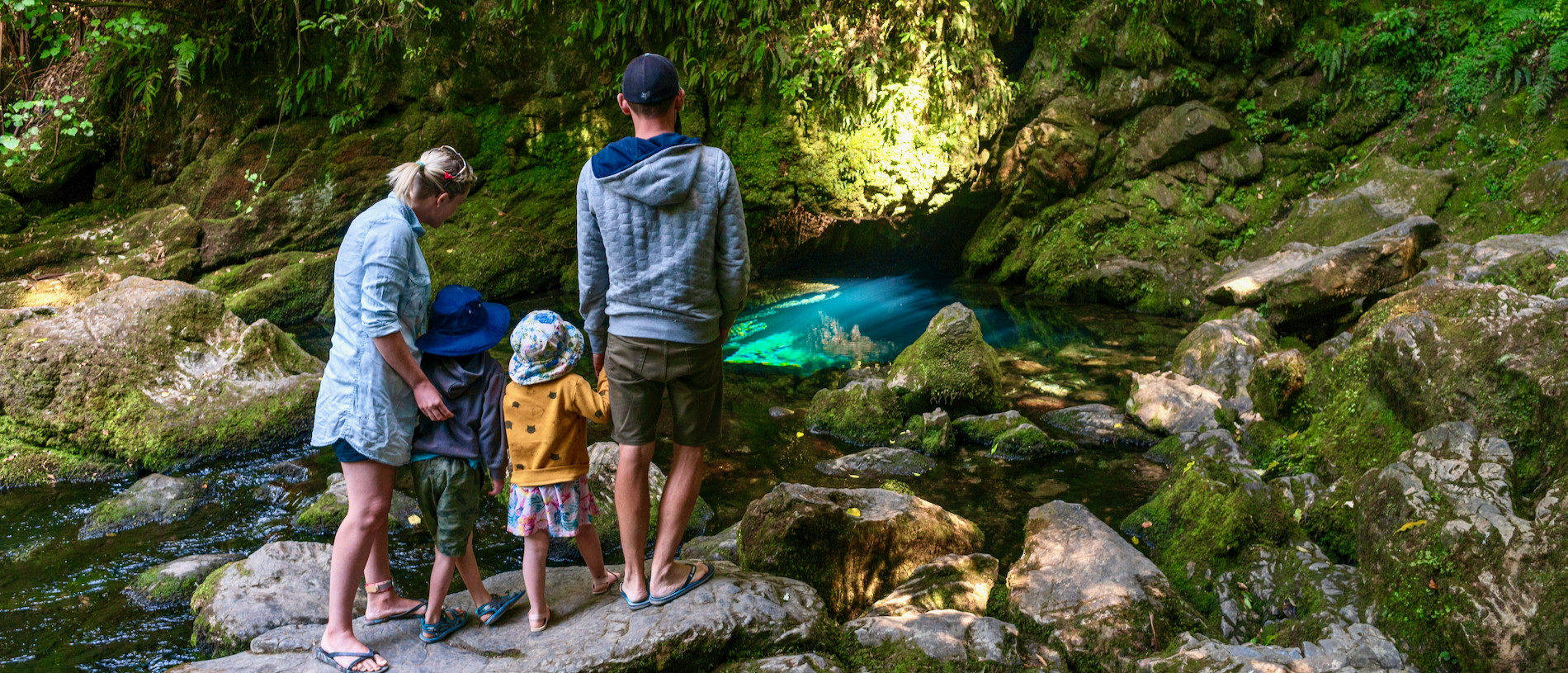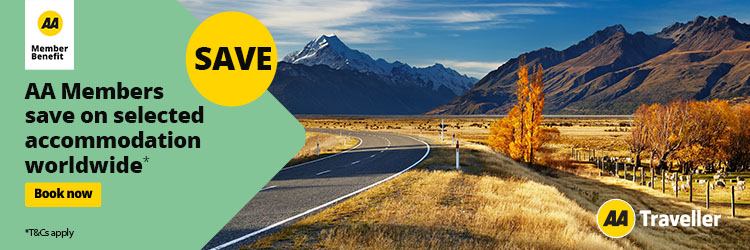
Brook Waimārama Sanctuary: Nelson’s nature reserve
The Brook Waimārama Sanctuary on the outskirts of Nelson City is the largest fenced preserve for endangered wildlife in the South Island.

Take a deep dive into the unique and curious attractions in the Nelson Tasman region. From perpetually burning flames in the middle of the forest, to a ballroom-sized cave, beautiful Japanese gardens, magical fresh water springs and more – check out these nine great Kiwi Gems.
Split Apple Rock or Toka Ngāwha in Te Reo, surely one of the most photographed rocks in the country, is just off Towers Bay in Abel Tasman National Park. It sits on a bed of smaller rocks, poking out of the tide in a strange yet elegant way that demands a closer look; that closer look is best had from a kayak. As it’s planted just around a couple of corners from Kaiteriteri, paddling to it by kayak is a feasible option and kayaks can be hired from that beach. If that sounds too strenuous, boat tours from Kaiteriteri and Marahau sail close to Split Apple Rock and they stop for photo ops. Alternatively, you can walk to Towers Bay – there is a short, easy track – and wade out to the rock at low tide, but you miss the chance to see seals and dolphins that hang out in this beautiful seascape.
Spooners tunnel is on the Tasman Great Taste Trail, between Kohatu and Wakefield. It’s a decommissioned rail tunnel dug by hand in 1891 and at 1.4 kilometres, that is impressive, considering the tough landscape. It’s hard, rocky, isolated and chilly too, with damp, mossy bush all around it and above it. There’s a well-designed info panel explaining the history and the engineering involved; stop and read before entering. Riding through the tunnel requires a bit of nerve; it’s very dark (take a torch) a bit spooky (just keep going!) and cold. The good news is it’s straight and slightly downhill from the Wakefield end.
Rabbit Island Moturoa, a small, sandy island in the Waimea Estuary, is connected by bridge to the mainland a short drive from Richmond. The other end of the island is accessible from Mapua by a cool little ferry which operates regularly to carry cyclists riding the Great Taste Trail. It’s only a ten-minute boat ride, but quite magical. The island is planted in pine, criss-crossed with forest roads perfect for cycling and walking and features a long, tidal but swimmable beach and several grassy reserves ideal for picnics and barbecues. The island’s bird life is healthy too, with white heron and royal spoonbills often spotted.
This is a remarkable find. Billed as the only place in the world where flames burn eternally in the bush, the Natural Flames Experience tour includes a drive up the Blackwater Valley to a private farm where you get out of the 4WD and walk for an hour through gorgeous native forest, learning about the ecosystem around you. Deep in the bush, you crest a hill, round a corner, and suddenly happen upon the flames – a perpetual fire in a hollow, fed by natural gas leaking from the ground. Your host slings down a hot plate, boils tea and cooks pancakes drizzled with local beechdew honey, and after warming your hands and backside you walk back happy. Don’t miss it.
The Ballroom Cave in Nelson’s Aorere Goldfields Conservation Area was so named as it was used by miners as a venue for dances in the 1800s. The conservation area, studded with gold-mining relics, was the first major gold field in New Zealand. The Aorere Goldfields track is a three-hour loop which takes in all the best bits. Pass through Druggans Flat to reach the first of two caves, Stafford’s Cave, which was formed more than 500,000 years ago and has stalactites descending from a large overhang. A little further along, on a short side track diversion, is the Ballroom Cave. You’ll need to take a torch to explore this one. Continue on to Druggan’s Dam for panoramic views of the Wakamarama Ranges, Ruataniwha Inlet and out to Farewell Spit.
The Riuwaka Resurgence – Te Puna o Riuwaka – is the spot in Nelson’s Kahurangi National Park where the Riuwaka River emerges from marbled depths of Tākaka Hill. With deep, clear pools set in incredible rock amongst moss and ferns, coming across the stunning spring is like discovering a fairyland. Easily accessible, the first five minutes of the walk to Crystal Pool are wheelchair-friendly. After that, the walkway continues to a viewing platform overlooking the spring where the river emerges at a brisk 9ºC year-round. The Riuwaka Resurgence is considered wāhi tapu by local Māori who believed the waters had powerful healing properties, so to respect that you should not eat or swim here. Find Riuwaka Resurgence Walkway at the end of Riwaka Valley Road, 16km north of Motueka.
With reflective ponds, curving footbridges, trickling bamboo spouts, bonsai and cherry trees, the Mizayu Garden is a serene escape and multi-sensory experience. Found on the outskirts of Nelson City, the gardens were designed to celebrate Nelson’s sister city relationship with Mizayu in Japan. Pavilions and pergolas are set amongst exotic planting, providing plenty of places to linger or picnic. Enjoy the tranquil immersion in New Zealand native plants alongside Japanese species in harmonious planting. Cross a three plank bridge and listen for the sound of the shishi odoshi, a kinetic fountain, originally used in Japanese gardens to keep wild animals out. And make sure you check out Jim's Pine, a weathered and windswept bonsai that is more than 30 years old.
The Nelson Boulder Bank – Te Pokohiwi – is a 13km spit formed by debris from slips at the Mackay Bluffs that was swept off the coast by sea currents over 10,000 years. Te Pokohiwi, which shelters the Nelson coast in Tasman Bay, varies in length from a narrow 55m at high tide to 240m at low tide. In 1906 a cut was made in the bank to allow easier passage to Nelson Harbour for shipping. Today, you can explore this internationally-renowned phenomenon – the largest naturally formed reef in the Southern Hemisphere – walking from Boulder Bank Drive to The Cut on an unformed track. The walk, which takes two to three hours one way, is very exposed so be prepared for changes in weather and wear supportive boots, as it's an easy place to roll an ankle.

Did you know that Maruia Falls, near Murchison, were created in 1929 when an earthquake caused a landslide diverting the course of the Maruia River and forcing it to cut a new channel over an old river bank. Today, the gorgeous 10-metre-high waterfall can be heard before it is seen, as it plunges into the deep pools below. While the pools can look tempting, this is not a safe spot for swimming, so don’t get in the water here. To reach the falls, park in the signposted carpark off Shenandoah Highway on the way to Murchison and take the five-minute walk to the base of the falls.